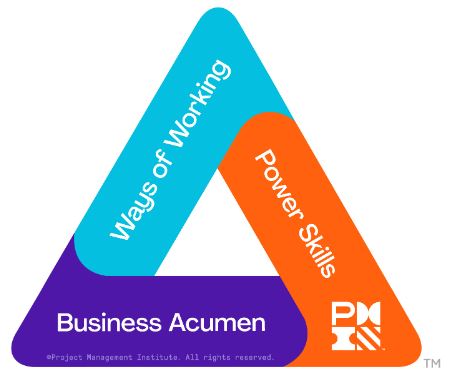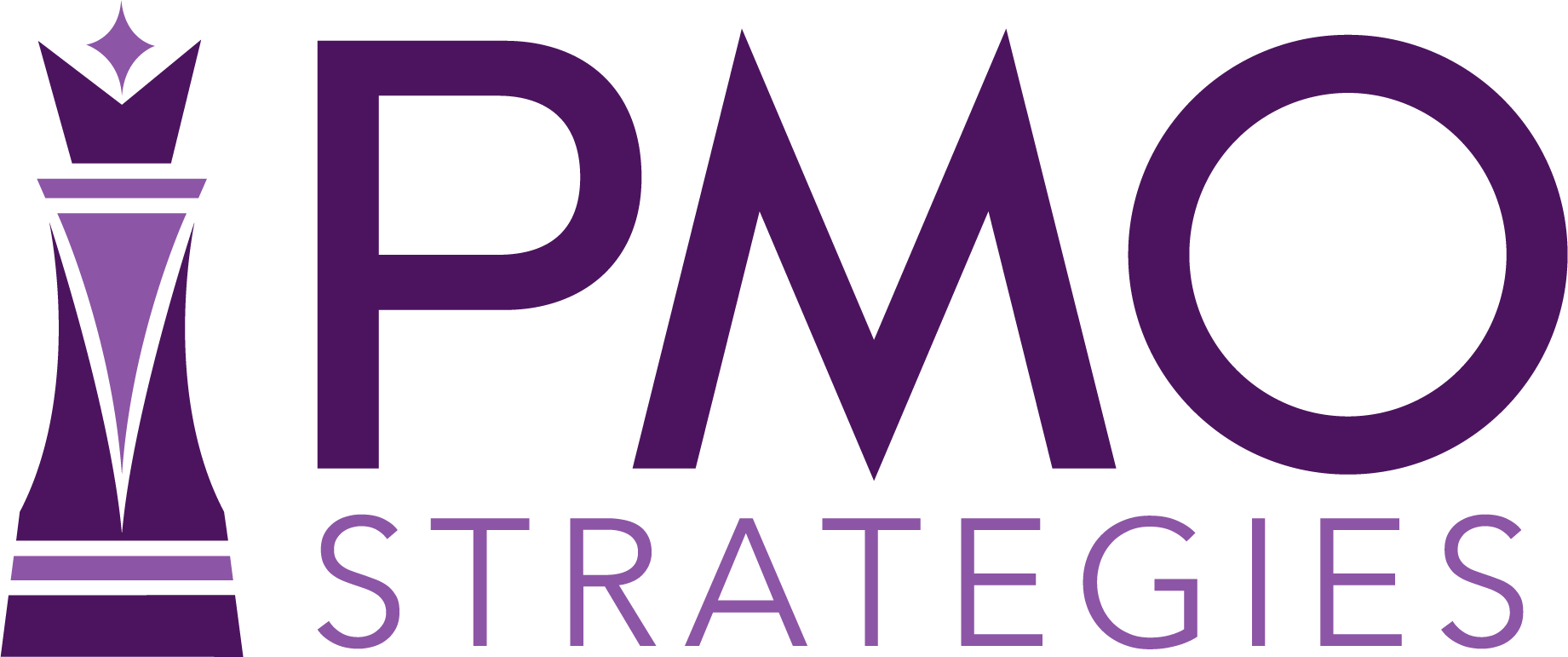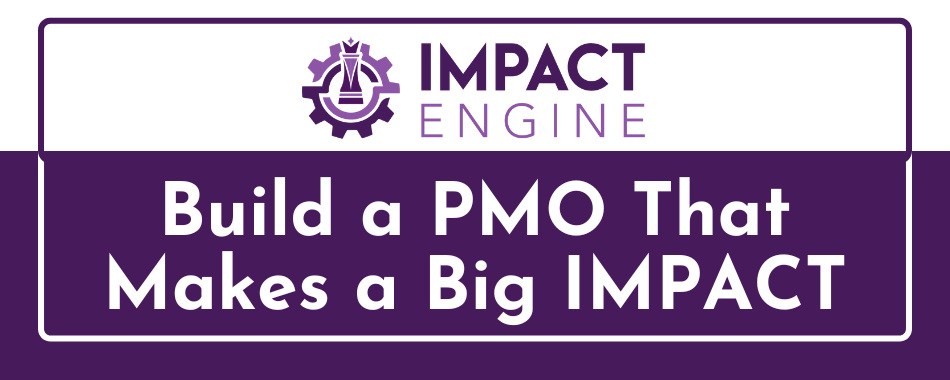Welcome to the PMO Strategies Podcast + Blog, where PMO leaders become IMPACT Drivers!

PMI Talent Triangle: Power Skills
You’ve probably heard it in your own head:
“Once we get the process locked in, the results will follow.”
“If we just deliver more projects, leadership will see our value.”
“Once we have perfect reporting, everyone will get on board.”
But here’s the truth: PMOs were never meant to be just about tracking outputs. The real reason executive teams approve the creation of a PMO is to drive better business outcomes.
In this episode of the PMO Strategies Podcast, I break down how too many PMOs have drifted away from that original purpose, what happens when the focus shifts from outcomes to activity, and the three commitments that set high-IMPACT PMOs apart.
It’s about purpose before process, and building everything around the results your organization needs most.
What is a PMO really for?
At its core, the PMO exists to make sure the work of the organization delivers better business outcomes. That’s the reason executives approve its creation—not to simply monitor activity, but to ensure that projects and programs produce results that matter.
Inside the organization, a PMO connects strategy to execution, helping leaders make informed decisions about where to invest time, money, and resources. Outside the organization, it strengthens the delivery of products and services to customers, stakeholders, and communities, increasing confidence in the organization’s ability to deliver on its promises.
The PMO does this by:
-
- Clarifying priorities so every project supports the organization’s strategic goals
- Aligning resources and schedules to maximize business IMPACT
-
Measuring results to confirm that outcomes match the intended benefits
A PMO can be built for a single initiative or stand as a permanent part of the organization. But if its scope changes without adjusting how it operates, it risks falling into a one-size-fits-all approach that slows progress and hides the real value it was created to deliver. High-IMPACT PMOs continually recalibrate to stay anchored to outcomes.
Driving outcomes isn’t luck. It’s intention.
High-performing PMOs don’t wait for results to speak for themselves—they make sure their purpose is clear in every action they take.
Here are five ways to keep your PMO’s real value front and center:
1. Define the outcomes first.
Start every initiative by clarifying the business results you’re aiming for, not just the deliverables. Many PMOs get stuck in activity mode because outcomes aren’t explicitly stated at the start. If your team doesn’t know the “why” behind the work, they’ll default to measuring success by completion instead of contribution. Keep those outcomes visible so every decision can be tested against whether it moves you closer to the business results.
2. Connect activities to results.
Don’t just show completed tasks. Translate what was done into the language executives use to make decisions such as revenue gained, costs avoided, time saved, or risks mitigated. This connection is what shifts perception from “support function” to “strategy driver.” Without it, even strong execution can be misread as admin work.
3. Review progress regularly.
Build a predictable cadence for reviewing progress against the intended outcomes, not just schedules or budgets. This positions the PMO as a proactive partner, making mid-course adjustments based on the highest-value priorities. This rhythm prevents surprises and shows leaders you have the situation under control.
4. Equip your leaders with proof.
Executives need more than status updates. They need succinct, outcome-focused proof points they can use in their own conversations. By giving them a clear before-and-after view of your impact, you help them communicate your wins and position the PMO as indispensable to the organization’s success. This turns leadership trust into leadership advocacy.
5. Celebrate meaningful milestones.
Shift celebrations away from “project closed” to “outcome achieved.” Recognizing when the PMO’s work delivers tangible benefits reinforces the link between effort and business value. This type of visibility builds internal morale and ensures stakeholders see and remember what your PMO contributes at a strategic level.
These practices don’t require extra bureaucracy. They require focus, discipline, and a commitment to making outcomes, not outputs, the measure of success.
What Changed When I Stopped Treating the PMO as Just Delivery
Earlier in my career, I believed the PMO’s job was to keep projects moving and make sure deliverables got out the door. If we met the deadlines and stayed on budget, I thought we were winning.
But the moment I shifted my focus from outputs to outcomes, the role took on an entirely new meaning. I stopped measuring success by activity and started measuring it by the difference we were making.
The work became more strategic, the conversations with executives became more meaningful, and the team’s contributions were recognized in a new way.
It wasn’t about adding more process. It was about aligning everything we did to the results the business cared about most. And that changed everything.
Stop Defining Your PMO by Outputs
Reports, templates, and performance tracking all have their place. But on their own, they don’t prove your PMO’s worth. What matters is the story those tools tell about how your work is moving the organization toward its most important goals.
When the conversation stays focused on activity, the real IMPACT gets buried. Leaders hear what was done, but not why it mattered—and that’s when credibility starts to slip.
Executives pay attention when the PMO connects the dots between effort and results. That’s when the role shifts from tracking work to driving the outcomes that shape the organization’s future.
🎧 Click play to learn how to realign your PMO around the outcomes that earn trust, secure support, and prove your value at the highest level.
P.S. Looking to shift your PMO from execution to true strategic influence? The IMPACT Engine System gives you a clear, step-by-step path to deliver measurable outcomes, build executive trust, and elevate your role across the organization—without the chaos and overwhelm.
P.P.S. On September 10, we’re celebrating the one-year anniversary of The IMPACT Engine! Whether you already own the book or have been waiting to grab a copy, now’s your chance. Not on the newsletter yet? Join today so you don’t miss the exclusive September 9 sneak peek at special offers and giveaways—my way of saying thanks for an incredibly IMPACTful year!
T hanks for taking the time to check out the podcast!
hanks for taking the time to check out the podcast!
I welcome your feedback and insights!
I’d love to know what you think and if you love it, please leave a rating and review in your favorite podcast player. Please leave a comment below to share your thoughts. See you online!
Warmly,
Laura Barnard









